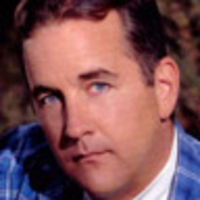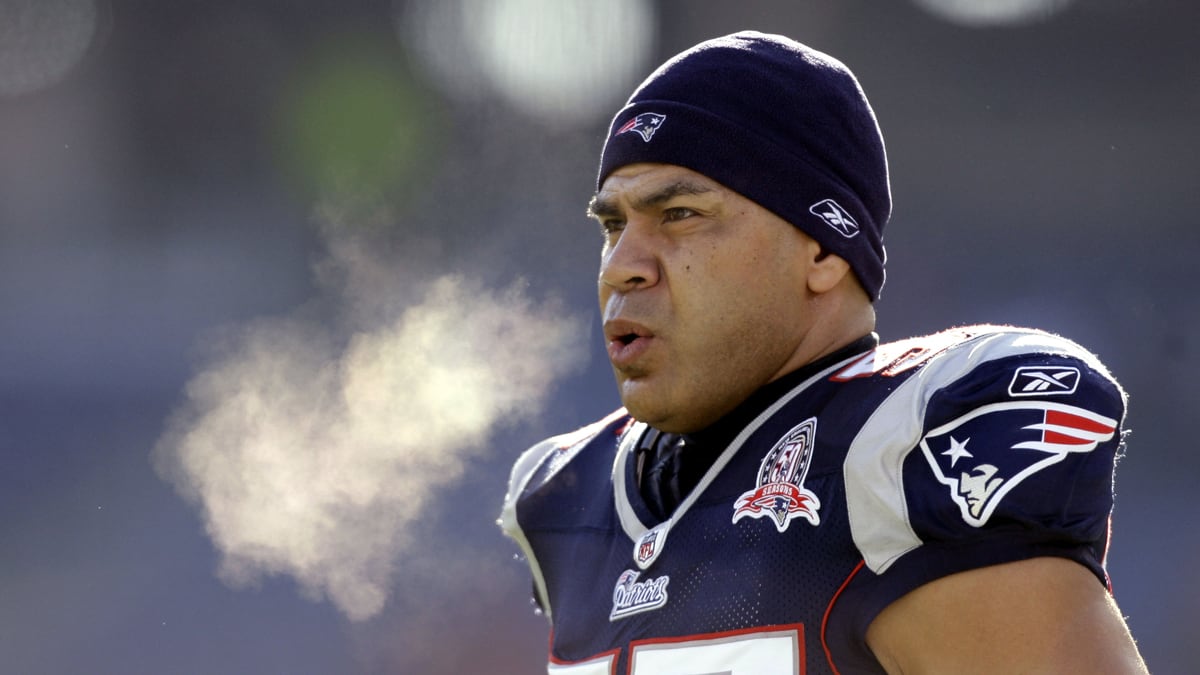San Diegans, as well as football fans, players, and coaches across the country, are in mourning and are all asking the same question: Why did former National Football League great Junior Seau take his own life?
The 12-time Pro Bowler and 20-year NFL veteran who played for the San Diego Chargers, Miami Dolphins, and New England Patriots, Seau, 43, whose love for the game, fiercely aggressive play and tireless off-the-field commitments to numerous charities earned him iconic status—especially in San Diego County, where he was born and raised—died Wednesday morning of an apparent self-inflicted gunshot wound at his beachfront home in Oceanside, north of San Diego, according to police.
Seau reportedly was alive when his girlfriend left for the gym at 7:30 a.m. When she returned home at 9:35 and discovered Seau unconscious she immediately called 911 to report a possible suicide, said Oceanside Police Chief Frank McCoy. Police and paramedics found Seau in a bedroom with a gunshot wound to the chest. A handgun was found next to the body. Efforts to revive him were unsuccessful, McCoy said.
No suicide note was found, but TMZ reports that Seau sent text messages Tuesday to his ex-wife and three children, telling them he loved them, and that they all responded but did not suspect anything was wrong.
As news of Seau’s death spread, family members, friends, fans, and members of the media gathered in front of Seau’s home, as well as outside Seau’s The Restaurant, the San Diego eatery and sports bar he opened in 1996 (it was closed yesterday in honor of his passing), and in front of the Chargers’ headquarters, which is about a mile from Qualcomm Stadium, where the team plays.
Standing with tears in his eyes in front of Seau’s restaurant, Robert Macintosh, a Chargers fan for nearly 40 years who played golf with Seau at a charity tournament a decade ago and talked to him several times over the subsequent years at various other charity events, told The Daily Beast he just doesn’t understand why Seau killed himself.

“I’m in shock. Junior was the greatest football player I’ve ever seen or ever will see,” said Macintosh. “But it’s the person I will remember more than the football player. Everyone loves Junior. He is the most popular athlete ever to play in San Diego, with respect to (former San Diego Padre) Tony Gwynn. He grew up here and still lives here, and he played here 13 years. It’s just surreal, sad, and hard to understand why this great man has apparently taken his own life. He cared so much about this community. He loved life, he loved kids and the ocean and so many things, and he really seemed to like being a role model.”
Macintosh managed to muster a smile as he added, “Junior wasn’t a great golfer; he had a funky swing. But he played pretty well despite that. That was Junior. He just had so much heart, in everything he did. He was always energetic and positive and he was a people person. He treated everyone the same.”
Like Macintosh, seemingly everyone is asking why this happened. Seau, who leaves behind two sons, a daughter and an ex-wife, is described by many who knew him as someone who loved life and lived it to the fullest. He liked to surf, paddleboard, and even play the ukulele. He always had a smile on his face, his friends and family say. But clearly there were demons. A friend and personal driver of Seau's, who asked not to be identified, told the local San Diego NBC affiliate on Wednesday that when he saw Seau and his girlfriend inside their home Tuesday evening, Seau was unshaven and looked like he hadn’t showered, which the friend said was very unusual.
The friend said Seau was friendly and spoke about a new surfboard rack for his SUV, but also said he was struggling with a lot of issues. “I felt like he wasn’t happy, he was always looking for something to make him happy," the friend told NBC San Diego. "He felt like he was getting old, losing his fame and glory.” The friend added that Seau also thought people in his life were using him for his fame and didn’t appreciate him.
While Seau’s apparent dark side may never be fully revealed or understood, some are speculating that his hard-hitting play and possible concussions could have affected his mental state. The violent nature of pro football, from the notorious bounty offered by coaches with the New Orleans Saints to players who injured opponents, to the increasing number of concussions among players league-wide, is an issue that is being increasingly discussed throughout the NFL.
Just last month, in a scenario chillingly similar to Seau’s death, former NFL safety Ray Easterling, who was the lead plaintiff in the first lawsuit filed against the NFL for the league's handling of concussion-related injuries, committed suicide. Easterling, 62, who played for the Atlanta Falcons, died of a self-inflicted gunshot wound at his home in Richmond, Va., according to police. Easterling was discovered by his wife; a handgun was found nearby.
Seau had exhibited some troubling behavior in recent years. He was hospitalized in 2010 after his Cadillac Escalade SUV went off Interstate 5 in Carlsbad, which is between San Diego and Oceanside, and plunged down a 30-foot coastal cliff. Officers said they asked Seau if he had tried to kill himself, but he told them he had fallen asleep at the wheel. Police told him he was very lucky to have survived the fall. Was this a harbinger of what was to come? Some witnesses said at the time that they saw the car speed up as it approached the cliff. But it was never officially declared a suicide attempt.
Just hours earlier, Seau had been arrested on suspicions of assaulting his 25-year-old girlfriend at his home. She did not require medical treatment, and Seau was never charged in the incident. At the time, Seau’s ex-wife, Gina DeBoer Seau, said that Junior would never hurt anyone, including himself. On her Facebook wall on Wednesday, Gina posted a single word: “lost…” .
Outside Seau’s home on Wednesday, Seau’s mother, Louisa Seau, 74, who is affectionately known as “Mamacita,” was visibly despondent and expressed raw emotion as she addressed the throng of media and supportive friends and fans of her son.
“Why? Why? I don’t understand, I don’t know anything,” she said in her Samoan accent. “God please, take me, take me, leave my son alone, not my child. But it is too late, too late... I don’t understand.”
It’s unlikely that this tragedy will tarnish Seau’s image as a man who spent so much of his life helping the less fortunate, especially children, and encouraging teammates to be the best they can be. In 1992, he established the Seau Foundation to support at-risk kids. Last fall, he raised $25,000 to fund a new athletic training facility at Oceanside High School, where Seau was a standout athlete in football and basketball. For 20 years he has hosted the Junior Seau Celebrity Golf Classic, which benefits his foundation. He also was a big booster of the Oceanside Boys and Girls Club, among many other organizations.
As for what he did on the field, few have ever been better. A ferocious linebacker who played for two decades and who will unquestionably be a first-ballot NFL Hall of Famer, Seau had a rare combination of speed and size and an engine that never turned off even during practice. One of the most fiery competitors and hardest hitters to ever play the game, Seau was both revered and feared by opponents.
Seau, who played with the Chargers for 13 seasons beginning in 1990, then played for the Dolphins before closing out his career with the Patriots, will likely be forever remembered by most as a Charger—and that’s apparently how he wanted it.
“He always would say to me, ‘I’m always a Charger. I went to Miami. I went to New England. But I’m always a Charger,’” said current Chargers coach Norv Turner outside the team’s headquarters on Wednesday. “He was such a great mentor for so many people, and he has affected and impacted so many people’s lives.”
Seau certainly had an impact on Barbara Cousins Trageser, an editor with the North County Times newspaper in San Diego County. Trageser said that the day she interviewed Seau when she was a junior in high school was the day she knew she would be a journalist.
“He and (fellow Charger) Ronnie Harmon held a pep talk-type event for kids in Chula Vista (in San Diego County) in March 1993,” Trageser recalled. “I was there on behalf of my high school paper to cover the event, and afterward the handful of student journalists had the opportunity to interview Junior. He was encouraging and so down-to-earth. I wasn't, and still am not, a big sports fan, but he was a part of our community, a part of our collective family. His loss has hit us as hard as if a family member was gone.”
San Diego County medical examiners hope to provide more details about Seau's death after an autopsy, which could be completed as early as Thursday. Some may well raise questions about why Seau chose to shoot himself in the chest. Some NFL players have killed themselves in similar ways, apparently to preserve their brains for research. Former Chicago Bears safety Dave Duerson, for example, reportedly shot himself in the chest so his brain could be studied for the effects of concussive injuries.






